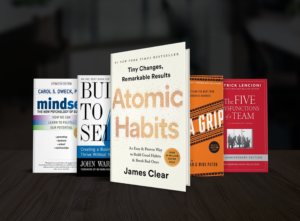Hosting a blog on your website has endless benefits for your business. From increasing your organic search traffic to boosting brand awareness, GreenCup Digital is a blog advocate.
And while most of our clients are open to the idea of hosting a blog, it’s the question of maintaining it that brings hesitancy. To help ease your worried mind, we’ve put together a guide on what makes a good blog post PLUS all the SEO must-haves to make sure it’s working for you.
First, let’s clarify what a blog is. A blog is a dedicated area of your website that houses blog “posts.” These posts can include articles, guides, press releases, and so much more. Typically they cover one topic or question and can range from 500 words to 2,000+.
What Makes A Good Blog Post?
A good blog post is a solution. While you can mix in things like case studies and opinion-based articles, the posts that perform the best answer a question, solve a problem, provide an explanation, or create a positive result.
Most often, a solution comes in the form of a how-to, guide, list, or review but can also focus on hot news topics or simply answer a “what is” question. For example, “what is a good blog post.” The best part, you can deliver a single solution in multiple ways. Take the topic of “blog posts,” which could be used in these types of posts:
Listicle(list): 5 Ways To Improve Your Blog Post
How-To: How To Write A Blog Post
Review: The 5 Best Platforms To Host A Blog
Infographic: How A Blog Post Can Impact Your Buyers Journey
Image-Based: 5 Blog Post Layouts To Improve Readability (include image examples of each layout)
Guide/Pillar Page: The Ultimate Guide To Blogging in [insert current year].
Newsjacking: Why blogging isn’t dead yet.
As you can see, the opportunities are endless!
Your blog should be educational AND engaging. Now, blog posts are not the most exciting thing to read about, but you can make it so by using your “voice ”or, better yet, the language of your target audience. Don’t just talk at someone, speak to them. The best way to build credibility is to sit at eye level with your audience. Not only answer their question, but use terminology and examples they can understand or relate to.
You could also interject the post with a funny topic-related meme…
See, one way we connect with our clients is (questionable) humor. While memes are fun, photos and videos can help add visual interest to topics that may be bland otherwise. They can also provide step-by-step instructions to guide users through a problem.
So to clarify, if you’re ready to turn your post into a GOOD blog post, it should:
- Provide a solution.
- Educate by speaking to your reader.
- Be interesting and/or provide some entertainment value.
These items make a blog post “good” to those reading it, but how do you make a post “good” for your business? While writing strong content will help you engage your audience and encourage backlinks from other sources, some structural items to a blog post can improve your SEO and support your marketing efforts long term.
SEO Must-Haves For Every Blog Post Include:
- Longtail Keyword
- Headings
- Internal & External Links
- Alt Tags
- Meta Description
First up is your keyword. When writing a blog post, focus on one longtail keyword that represents your business or topic. Longtail keywords are a more targeted search phrase. Instead of searching “good blog post,” an average person would most likely search “what makes a good blog post.” Your keyword typically relates closely to the title of your post and should be used throughout your writing. This type of keyword is nice because it doesn’t feel like you’re “stuffing” a blog post for SEO. It’s a more conversational keyword phrase that’s easy to use throughout your writing and understandable to your reader.
Next up are headings! Google likes to see that <H1> (heading one) tag. Make sure you only use the Heading 1 tag in the title of your post. Throughout the rest of your post, use subheadings (H2 and H3). This will improve the way Google “reads” your blog post, but it can also help with user readability.
This attention to user experience also translates to links. You want to include a variety of internal and external links within each blog post. One way you can see higher levels of engagement on your blog is by linking to other relevant sources. You can also add a dedicated section to your blog post to provide users more blog posts surrounding the topic they just read about.
As for external links, be sure you’re linking to other industry experts or strong sources. For example, in this article, we linked to Yoast! Their plugin makes filling out things like keywords, site titles, and meta descriptions extremely easy. You can also link to pertinent stats to help make your point. On average, companies who blog produce 67% more leads per month! See what we did there?
Lastly, the average blogger dreads the more technical items but could be considered some of the most important. First up, alt tags, also sometimes referred to as an ‘alt attribute.’ These provide a text alternative to your image for search engines to read. If you’re boasting about your newest beer release, make sure you’re adding “Best New Beer Name IPA” in your alt tag. That way, when users are searching for a new IPA to try, it shows up in search results vs. the user searching for a new stout.
Meta descriptions don’t affect your SEO quite as much, but more the clickability of your link once it appears in Google Search results. Within 160 characters, try to use your keyword and entice users to want to “read more.” Think of this description more as ad copy!
Now Start Writing!
Once you’ve picked your blog post topic and written an educational yet interesting post, be sure to focus on a longtail keyword, appropriate headings, and include links, alt tags, and a meta description. Once complete, you’ve created yourself a good blog post! While it can seem overwhelming at first, set aside some time each month to brainstorm topics, post titles, and keywords. Keep a running list of ideas, so when it’s time to sit down, you’re ready to write! Have questions about the quality of your blog posts? Reach out for a Free Consultation from GreenCup Digital!





